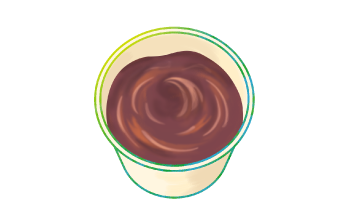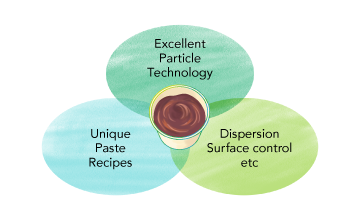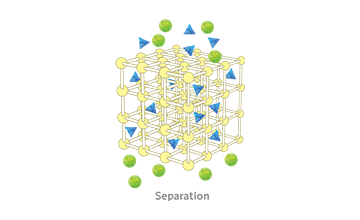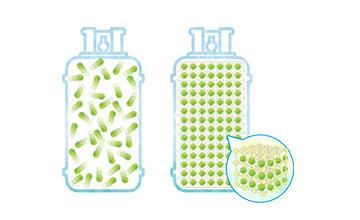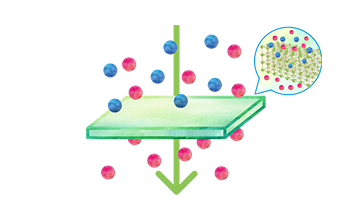MOFs (metal-organic frameworks), emerged in 1990s, feature uniform micropores and high specific surface area, among other characteristics. MOFs can be freely designed to demonstrate diverse functions, including separation, storage, and conversion. Their practical use is still limited but expected to widen in the future. Here, we focus on MOFs in three parts, presenting our interview with Mr. Matsumae, Co-creation Project Group Leader & MOF Project Leader.
I would like to start by asking you the basics of the subject, MOF (metal-organic framework), which is also called "PCP" (porous coordination polymer). What kind of material is it?
Simply speaking, MOF is one of the porous materials. One other example of porous material is activated carbon, which has been used since ancient times in Egypt. Also, natural zeolite had been found in the 18th century, and later, synthetic zeolite emerged. In 1997, Prof. Susumu Kitagawa at Kyoto University has reported a unique adsorption/desorption of small molecules on MOFs, which are also called porous coordination polymers (PCPs), MOFs/PCPs are built from metal ions and organic ligands forming two- or three-dimensional ordered structures with uniform micropores. Recently, MOFs have attracted significant attention because of their high specific surface area and various unique characteristics that other porous materials such as activated carbon and zeolites do not have. MOFs allow free control of their structure through the combination of metal ions and organic ligands. MOFs are produced in various ways, including conventional solvothermal synthesis, which mixes precursor solutions at high temperature and high pressure. Some types of MOFs are produced by simply mixing solutions at ambient temperature and pressure, forming reticular structure at the molecule level.
What kind of characteristics do MOFs have?
They can be designed freely. By combining organic linkers and metal ions, you can build MOFs with diverse shapes and pore sizes, resulting in a variety of attractive functions. For instance, you can fabricate a MOF filter that selectively allows small molecules to pass through while blocking larger ones. Separation is one of the fundamental functions of MOFs, that is, the MOF filters selectively permeate or filtrate target molecules from a mixture. MOFs exhibit high selectivity thanks to the uniform and tunable micropores, bringing about an excellent separation performance. This feature is not present in activated carbons, in which the size and shape of pores are far from uniform. Another fundamental one is storage. The ultrahigh porosity is preferable for adsorbing abundant molecules.
In recent years, researchers have proposed more and more applications, not only separation and storage, but also synthesis, catalysis, alignment, and transportation. Catalytic conversion is a good example. Some MOFs can selectively adsorb CO2 followed by reduction into methanol or ethanol, suggesting that MOFs can provide "sites"for various chemical phenomena.
Sounds like a dream material, as they can convert carbon dioxide into methanol!
Yes, it really is. Number of advanced studies have been done; capturing CO2 from air, having the CO2 react with hydrogen to generate fuel, and such. To benefit from these outstanding properties, MOFs are highly expected to be commercialized. Even though there are challenges of large-volume synthesis and production cost, we are convinced that those will be resolved as the product is used in many applications.
What applications have MOFs been put to practical use for?
For now, limited functions have been put into practice. One pioneering gas cylinder was developed by a U.S. company as a practical application. By filling the cylinders with MOFs, it is possible to safely transport larger quantities of hazardous gases at lower pressure. Another application is from a U.K. company. The company tries to protect fresh fruits from ripening during transportation. Fresh fruits naturally suffer from damage by ethylene gas released from itself. The solution is that protection gas loaded in MOFs is preferentially attached to the fruit over ethylene, leading to less damage to the fruits for a long time. In Japan, a coating company has commercialized MOFs for rust prevention. In the product, MOFs are dispersed in coating resin to capture corrosive gases generated on metal surfaces, preventing them from rusting. As can be seen from these examples, products using MOFs are steadily appearing on the market.
To be continued to 【Part 2】
Interviewee: Kazuo Matsumae, Co-creation Project Group Leader & MOF Project Leader, Market Co-creation Department, Business Creation Sector, Mitsui Mining & Smelting Co., Ltd.
(Date of interview: December 1, 2022)
(The company is hereinafter referred to as "Mitsui Kinzoku.")







